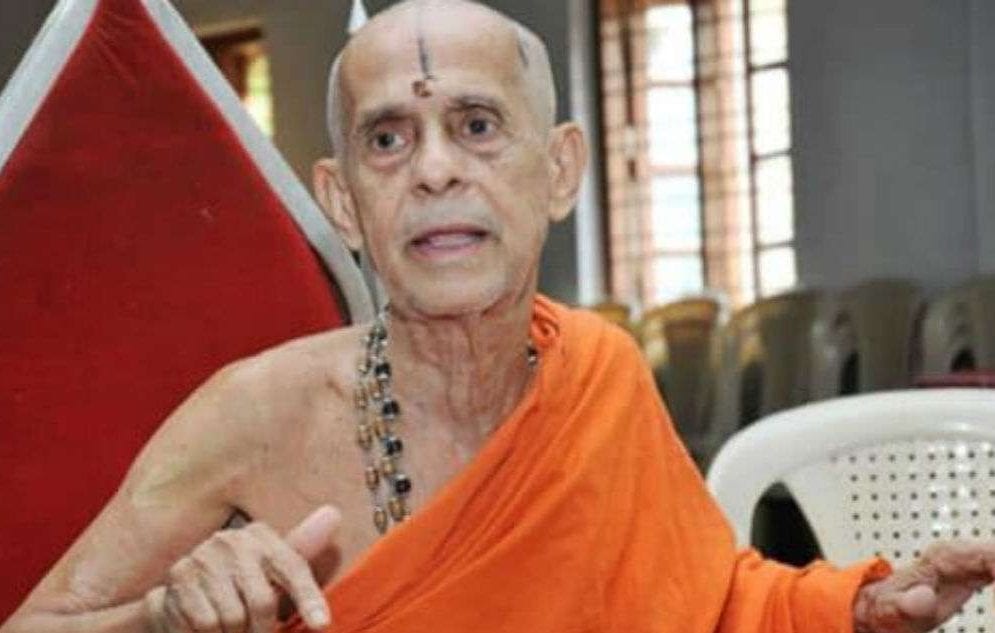
Handpicked by Golwalkar, Pejawar seer walked a fine Hindutva line
Vishwesha Tirtha was the south Indian face of the Ram Janmabhoomi movement in the 1990s and was arrested twice in Ayodhya on the day of the Babri mosque demolition. Most accounts describe him as the father of the Hindutva movement in coastal Karnataka, the Sangh Parivar’s oldest and strongest south Indian bastion.

I met Vishwesha Tirtha, the pontiff of Udupi’s Pejawar Adokshaja mutt, for the first time in 2007 at a press conference he was addressing in Mangalore. I had just finished basic newsroom training and taken my first posting as a district reporter for The Hindu.
I had researched him in the days leading to that press conference. Nothing, however, could prepare me for what I saw when I entered the conference room. Reporters and cameraman were lining up in front of the seer and he was giving them fruits as prasadam (religious offering).
As each journalist approached, he picked up one fruit and dropped it into their cupped hands. Most had taken off their footwear, some touched his feet to take his blessings and he obliged by mumbling a few prayer verses for them.
When he saw me hesitating, he smiled and said in the most casual, disarming way, “Come…take. Don’t you want prasadam?”
When I told him I don’t eat prasadam, he said, “Don’t you eat apples?” I saw no point in being standoffish after that. He reciprocated by making some small talk and asking his PA to exchange numbers with me. He has been a phone call away ever since.
South Indian face of Ram temple movement
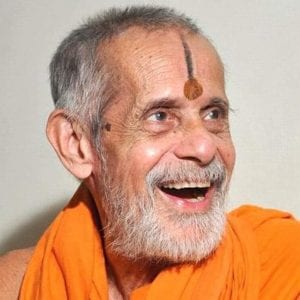
Vishwesha Tirtha was the south Indian face of the Ram Janmabhoomi movement in the 1990s and was arrested twice in Ayodhya on the day of the Babri mosque demolition. Most accounts describe him as the father of the Hindutva movement in coastal Karnataka, the Sangh Parivar’s oldest and strongest south Indian bastion.
At that moment it was hard to imagine the charming old man as one of the key people behind the formation of one of the most radical and feared political organisations of post-independent India, the Vishwa Hindu Parishad (VHP).
Over the next few years of my stay in Mangalore, I got busy documenting the many attacks on minorities by Hindutva groups such as the VHP, the Bajrang Dal, the Hindu Jagarana Vedike and the Sri Rama Sene. This was the period which saw the church attacks of 2008, the pub attack of 2009 and the homestay attack of 2012 as well as dozens of communal riots.
Ready to talk
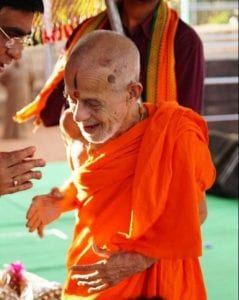
The Pejawar seer became my go-to person for a reaction from the Hindutva side every time there was an attack or the region was on the boil. Approaching other, more aggressive, leaders of the movement with difficult questions was always fraught with danger. It was not uncommon for reporters to be hassled after press conferences for asking not-so-pliant questions of Sangh leaders in the coast.
But with the Pejawar seer, one could ask any question without fear of repercussions or offending him. Whether the answer was to the point or not, to his credit, he never brushed aside a question or cut short an interview in a huff.
As a result, calling him after each violent incident for a reaction became my ritual. He never failed to issue a solemn condemnation but always threw in the caveat that the violence had been provoked, sentiments had been hurt.
Although he was one of the most prominent Sangh leaders in the region, he had great influence as a spiritual guru over a cross-section of politicians. Congress and JD(S) leaders make a steady beeline to him.
The monk of riddles
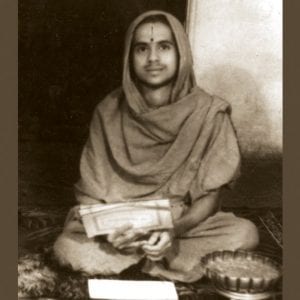
A newspaper obituary after his death on Sunday recalled how the pontiff described himself as the Dwandwacharya or the monk of riddles. Vishwesha Tirtha was very conscious of the thin line he tread. During our many long phone conversations, he often talked about taking the middle path, about the need to embrace change.
He would argue that Hindutva had been wrongly stereotyped as a violent movement. He would say that the reason for the growth of the Sangh was that it was a peaceful movement, aimed at uniting Hindus by removing all barriers of caste. He would go into these reflective monologues mostly when specific questions were asked of him.
Most obituaries describe the seer as a social reformer who spread Hinduism among Dalits by visiting outcaste neighborhoods, promoting temple entry for so-called untouchables and, on one occasion, even hosting an iftar party for Muslims in a facility attached to the historic Udupi Krishna temple.
Handpicked by Golwalkar
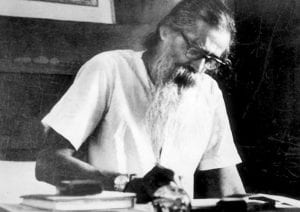
Vishwesha Tirtha was one of the early Hindutva ideologues of the 20th century. He was handpicked and trained when he was just in his late teens by MS Golwalkar, the man who wrote the Hindutva movement’s founding manifesto — Bunch of Thoughts.
Impressed by his disarming personality and way with people, Golwalkar invested a lot of time in the young seer and often visited him in Udupi during the late 1940s and 50s.
It was a time when large groups of lowered castes were abandoning Hinduism particularly with the rise of leaders such as Periyar E V Ramasamy and B R Ambedkar who famously said in 1935 that he would not die as a Hindu. In 1956, B R Ambedkar led lakhs of Dalits out of Hinduism and into Buddhism.
By this time, the Pejawar seer had already set up a wide network of groups in Karnataka that were focused on reconversion campaigns. There was a marked difference in the way the Pejawar seer and other Hindutva ideologues in the region approached the issue of religious conversions.
While other Hindutva leaders focused their attention on targeting evangelical movements that were weaning away the lowered castes, Theertha started a Hindu evangelical movement of his own by reaching out to not just Dalits but also other backward caste groups. He started the first mass reconversion drives in coastal Karnataka as early as in the late 1940s. The Sangh now calls such programs ghar wapsi.
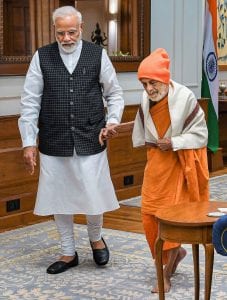
When Golwalkar founded the VHP in 1964 based on the stand that Buddhists, Jains, Sikhs as well as tribal communities were part of the larger Hindu fraternity, Vishwesha Tirtha was one of the only young faces in the founding group that included the veterans like SS Apte, Bharatiya Vidya Bhavan founder KM Munshi, Master Tara Singh and the religious guru Chinmayananda.
In 1969, Theerta — with help from his close friend, the then Mysore Maharaja and founder President of the VHP, Jaya Chamrajendra Wodeyar Bahadur — had organised the first ever state-level conference of the Vishwa Hindu Parishad.
Golwalkar was the chief guest at the event, which also saw the participation of many Congress leaders of the time. Recalling the 1969 conference fondly during a meeting at his Bangalore ashram in September 2015, he said to me, “When he came to Udupi in 1969, Guruji praised me in front of 65,000 people for helping the Mysore Maharaja with the national executive meeting.”
Four years earlier, in 1965, the then Mysore Maharaja and founder president of the VHP, Jaya Chamrajendra Wodeyar Bahadur, had organised the third national executive meeting of the outfit at his summer palace. Theertha had played a significant role in making that event a success by ensuring the participation of many Jain and Buddhist pontiffs.
A target for progressive, Left voices
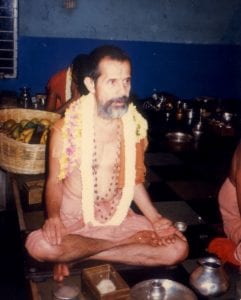
To many of his followers, he was an anti-caste crusader who prevented the exodus of lowered caste Hindus. His visits to Dalit neighborhoods were wildly popular and made for a huge media spectacle.
He was the favorite target of many progressive and Left oriented voices who said that he played a diplomatic role while his ideologues and followers spread hatred and observed centuries-old caste practices. One of the biggest criticisms against him was that despite his nationwide advocacy against untouchability, most of the Hindu mutts in his hometown of Udupi still practice untouchability and prevent the entry of lowered castes into the sanctum-sanctorum.
Every time I asked him the question about the untouchability and open casteism displayed by the heads of various mutts in Udupi, his standard response would be that his own monastery — the Pejawar Adokshaja mutt — had hosted lowered caste devotees many times. The rest, he would say, was out of his hands.
Vishwesha Tirtha’s detractors were not restricted to godless Communists or anti-Hindutva activists. Many powerful Brahmin priests too despised his work among Dalits and other lowered castes.
Stand-off with Khemaru mutt seer
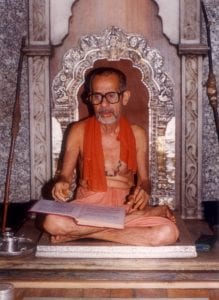
To my memory, however, his most bitter critic was the seer of the Khemaru mutt, Esha Vittaladasa who is one of the few non-Brahmin priests of the region to have a substantial following.
The Khemaru mutt seer has courted controversy many times in the past by openly challenging Vishwesha Tirtha to have a meal with him saying caste barriers can only be truly broken by inter-dining and intermarriage between castes. His claim was that Vishvesha Theertha always fed people of other castes but he never ate with them.
Asked how he remembers his rival after his passing, Vittaladasa said, “I am first and foremost a devotee and a disciple of the Pejawar Swami ji. He has done a lot of great work. My criticism should not be taken out of context because even the greatest men are allowed one or two faults.”
On one occasion, when I asked him about the claim of the Khemaru mutt seer that he would not dine with non-Brahmins, Vishwesha Tirtha said, “I am like his grandpa. I will make him sit on my lap and feed him.”


